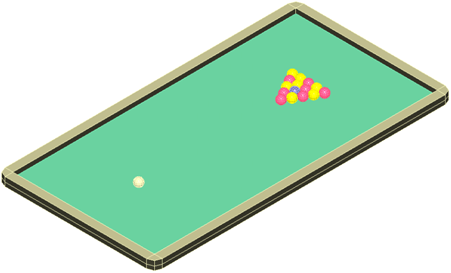RD-E: 0900 Billiards (Pool)
The impact and rebound between balls on a small billiard table is studied. This example deals with the problem of defining interfaces and transmitting momentum between the balls.
The study is divided into three parts:
At first, a general study is used to see the results of a cue ball when coming into contact with the 15 other balls arranged in a triangle. The balls are meshed for the purpose using 16-node shell elements (for the curvature) and a TYPE16 interface between each ball as well as between the balls and the table. The results show that the momentum is not homogenously transmitted: the balls on the table are not being evenly spread out.
Secondly, the collision between two balls is studied. All parameters are the same as in the first part. The reaction of those two balls is then compared to the analytical results.

Figure 1.